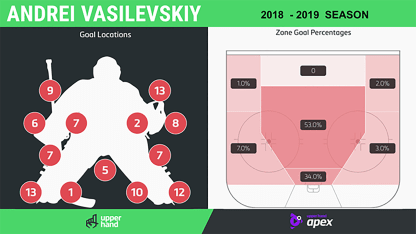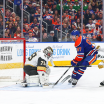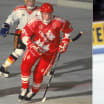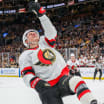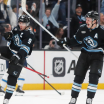Clean five-hole: Vasilevskiy gave up 18 goals on clean shots where he had time to get set and square, which is better than the average (22.9 percent) and his numbers last season (24), but these shots accounted for six of 16 goals between his legs, and several were from further out. Rather than defaulting to a butterfly in these situations, he has a tendency to use a half butterfly, dropping his right knee and keeping his left leg up longer along with a raised glove, which leaves a gap under his left pad that contributed to a surprisingly high 10 goals there.
Blocker no more?: Similarly, it will be interesting to see if the Blue Jackets continue to target last season's blocker side trends despite a marked improvement this season. Vasilevskiy gave up more goals mid- and high-glove this season (21) compared to the blocker side (15) this season. Last season, he gave up 47 percent of his goals over the pads on his blocker side, which was 16 percent above the average, and although the goal chart isn't indicative of save percentage, the Boston Bruins appeared to target it in the second round last season, scoring eight of 12 goals there. He also gave up more goals from outside the home plate area on that side of the ice last season, but those numbers are also down this season, with more goals from the glove side.
Traffic management: Vasilevskiy seemed to be better in traffic this season, lowering the percentage of goals resulting from screens to 14 percent from 21 last year. After screens played a role in half the goals against him in the first two rounds of last season's playoffs, don't be surprised to see plenty of bodies in front of him against Columbus. A tendency to look up and over has cost him low goals before including two through the five-hole last playoffs and three this season.

